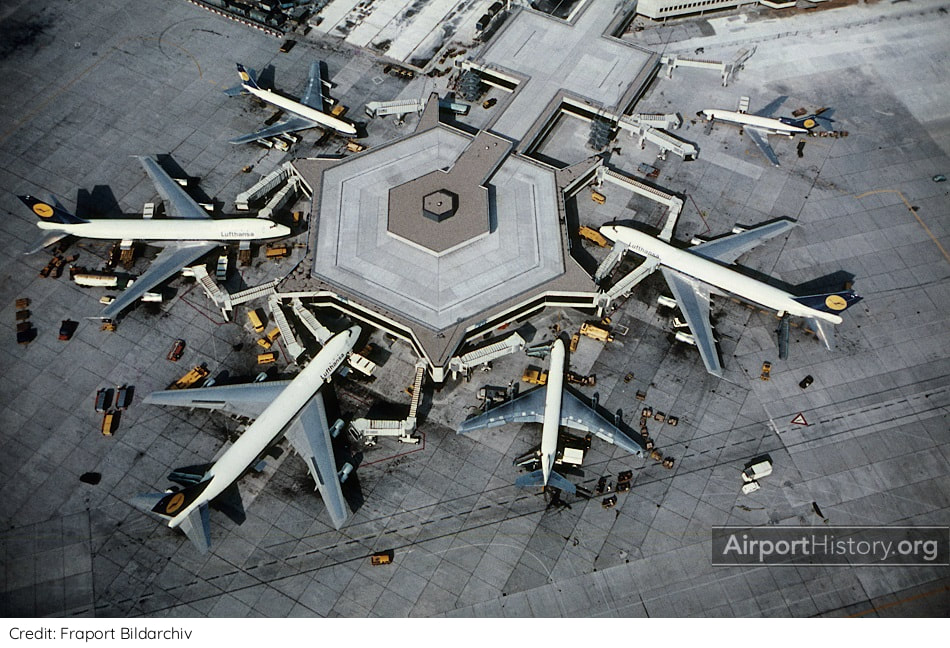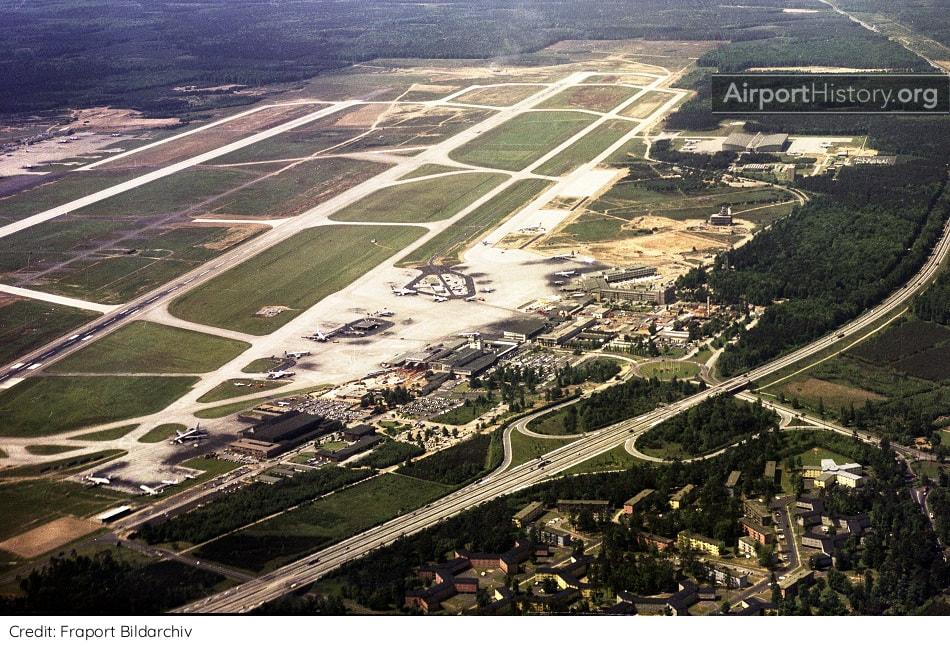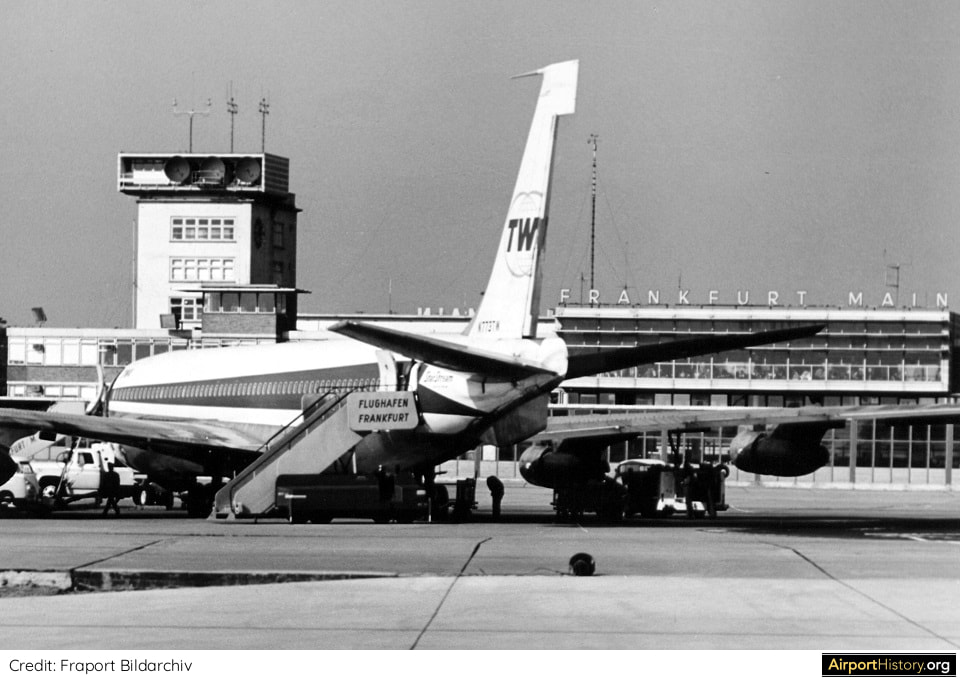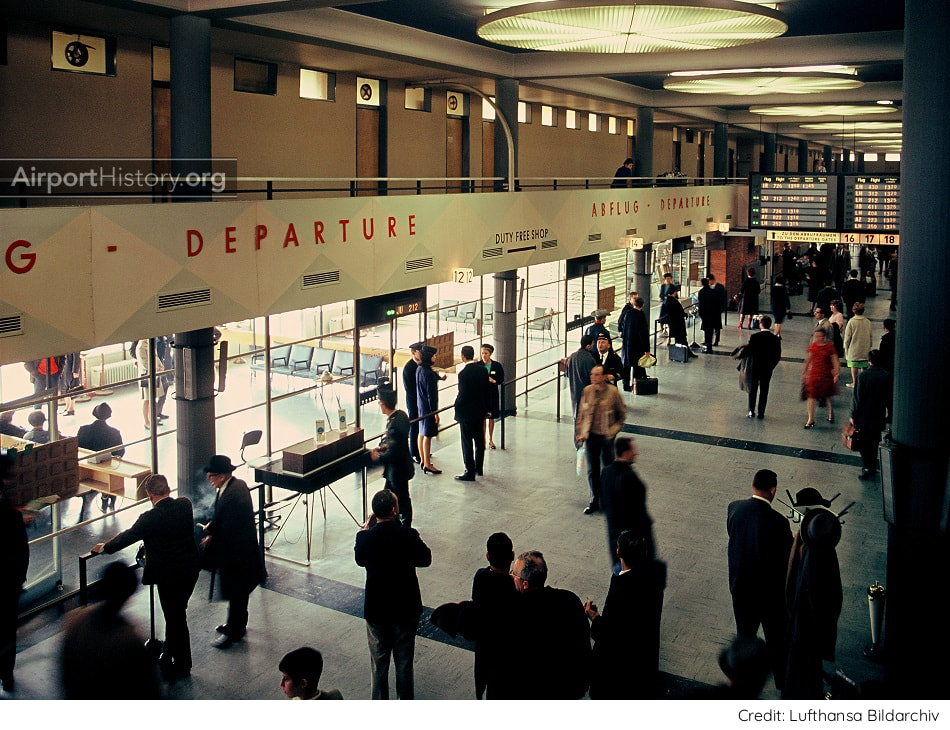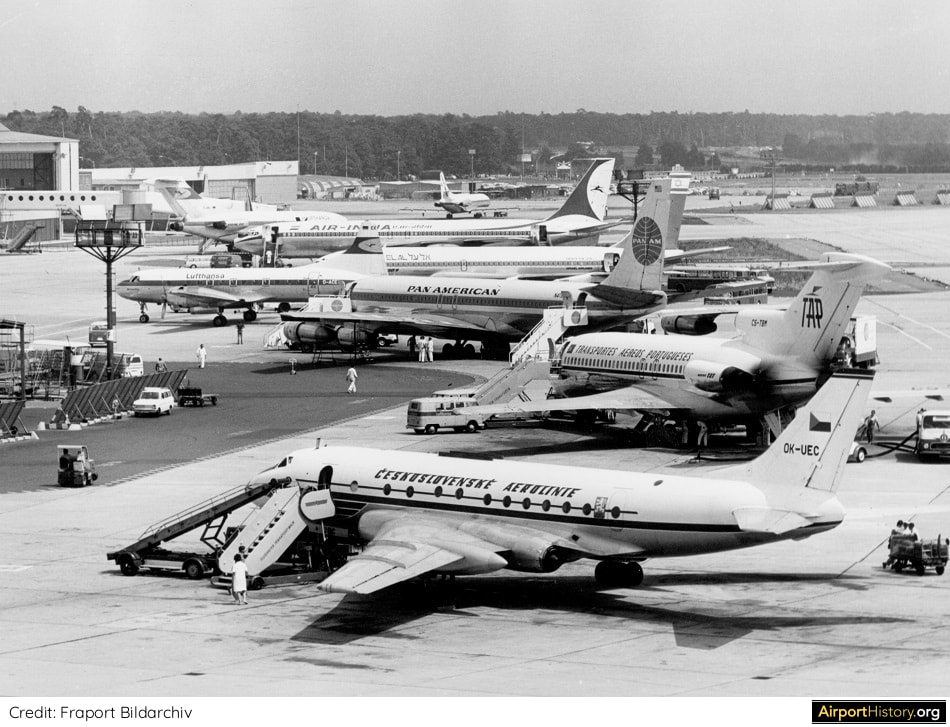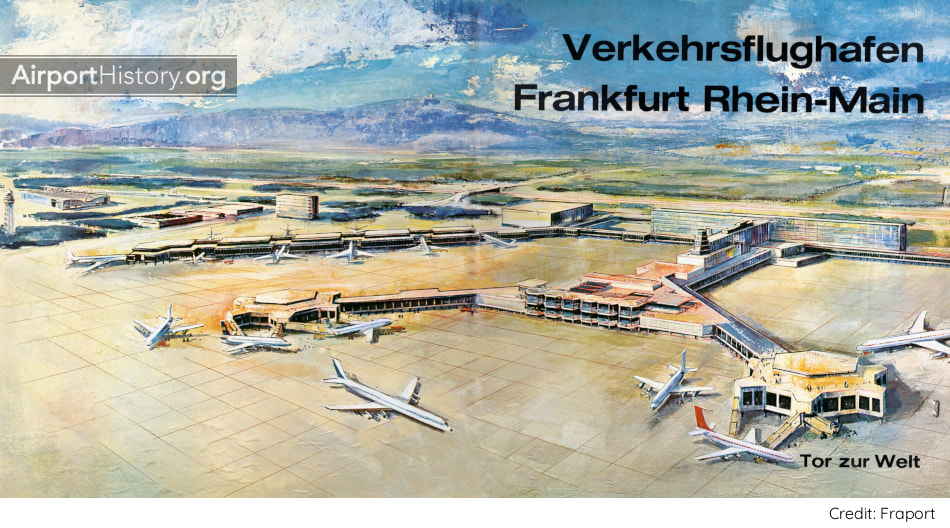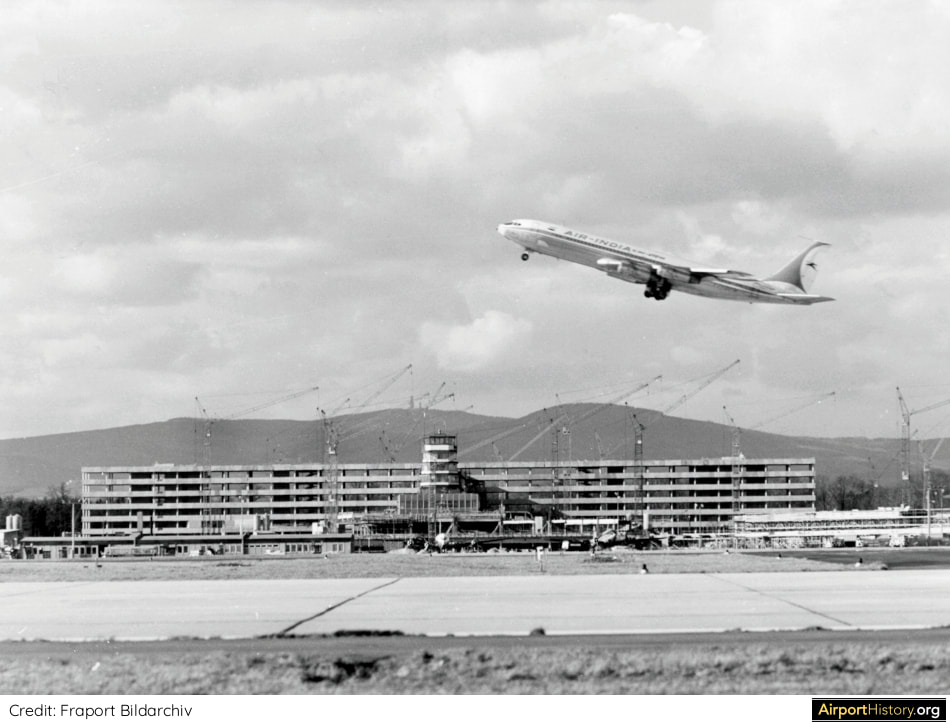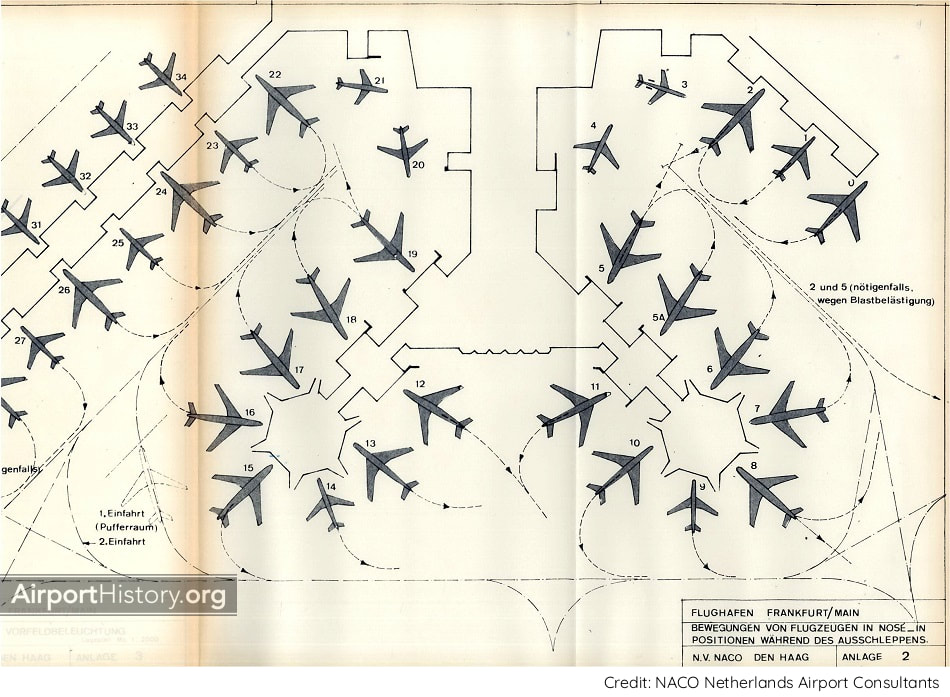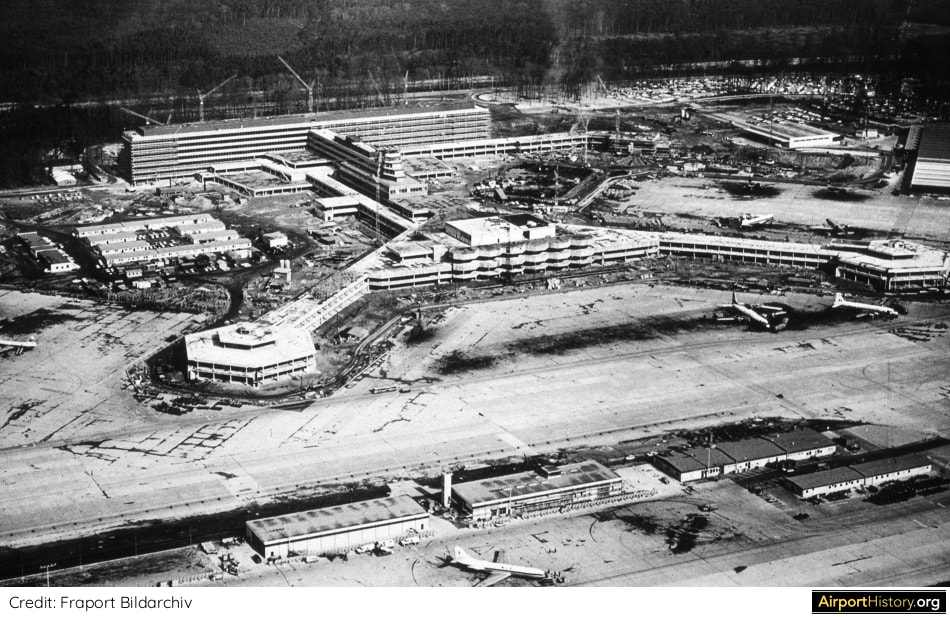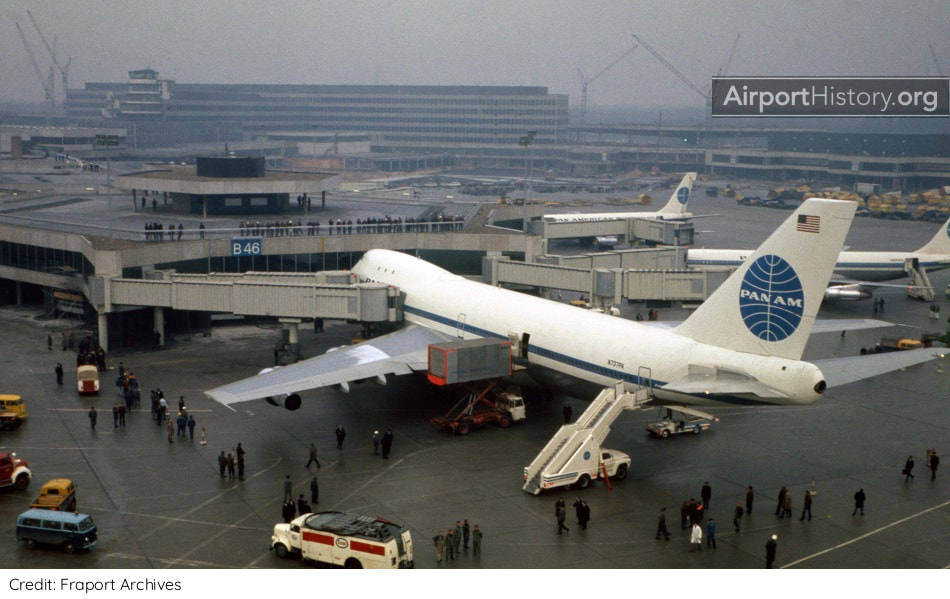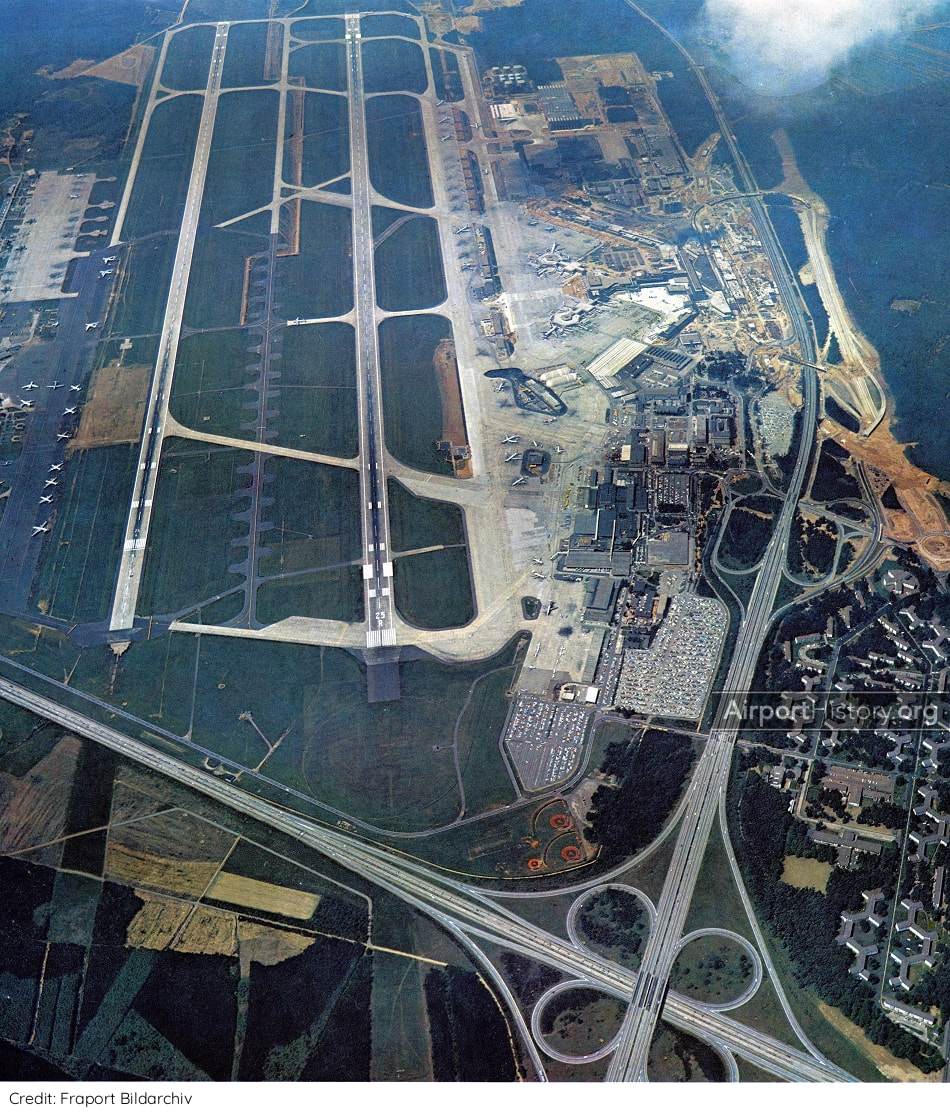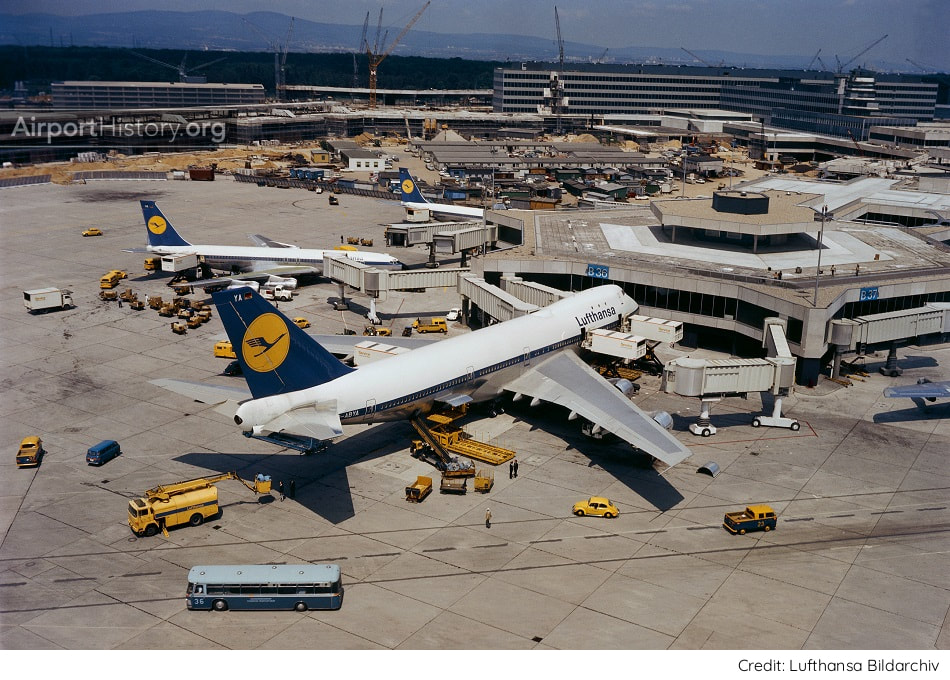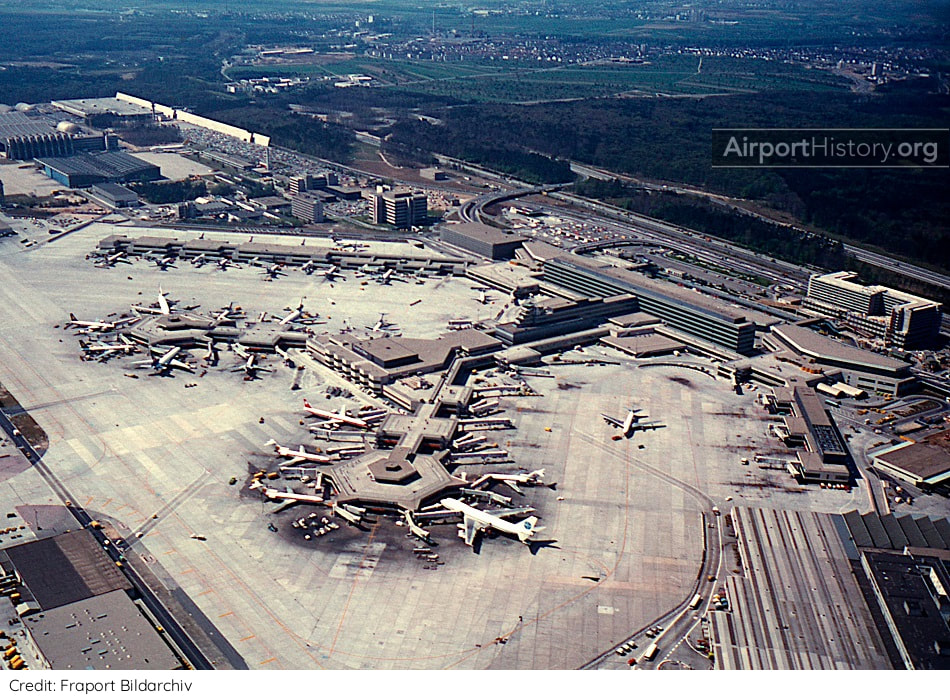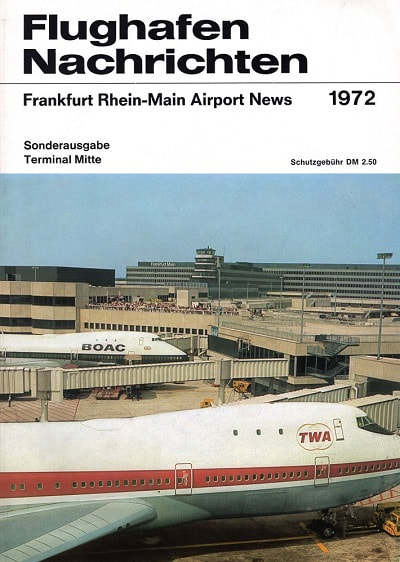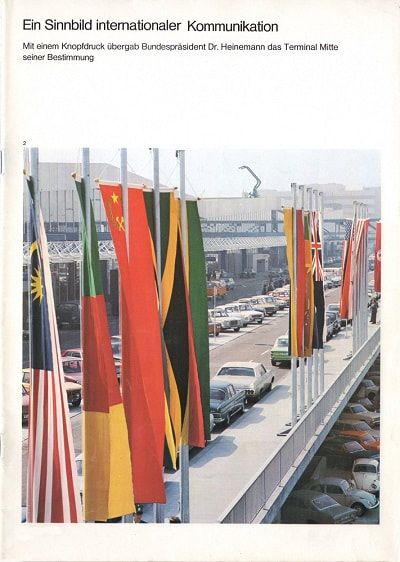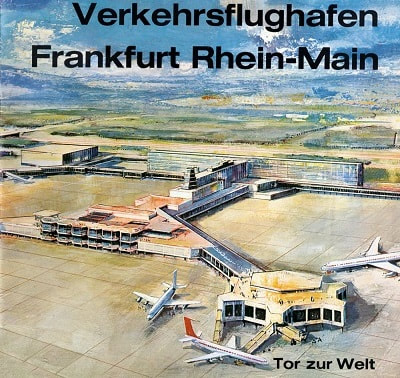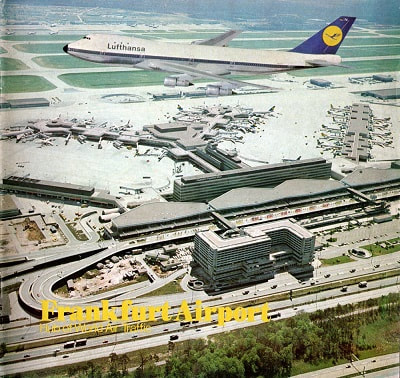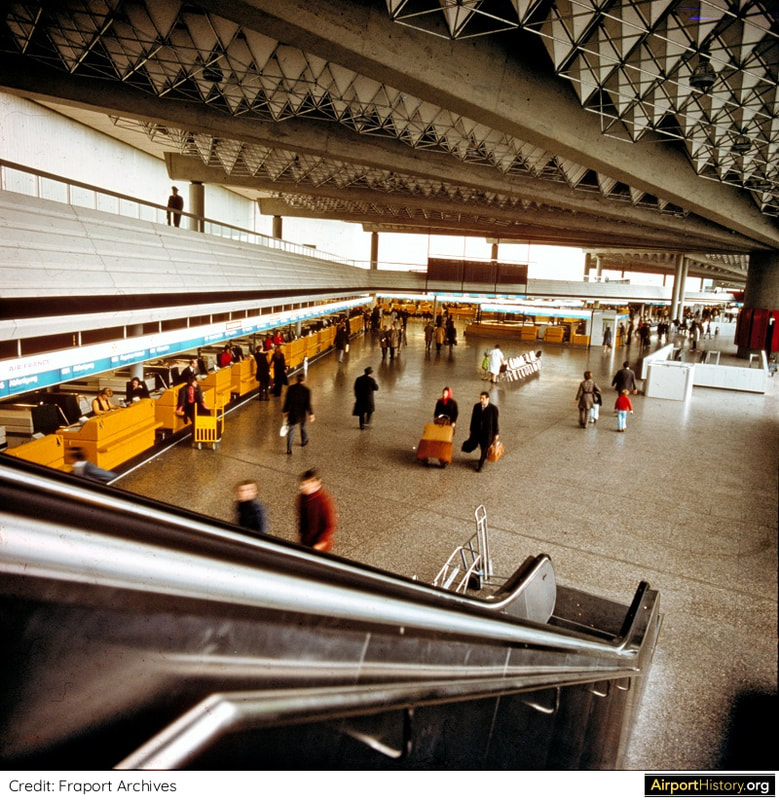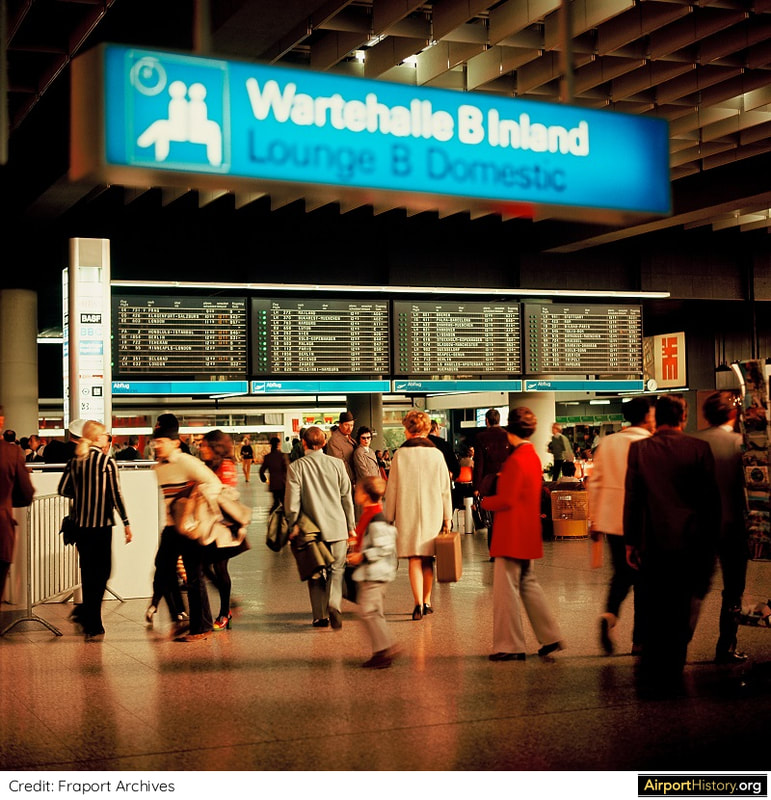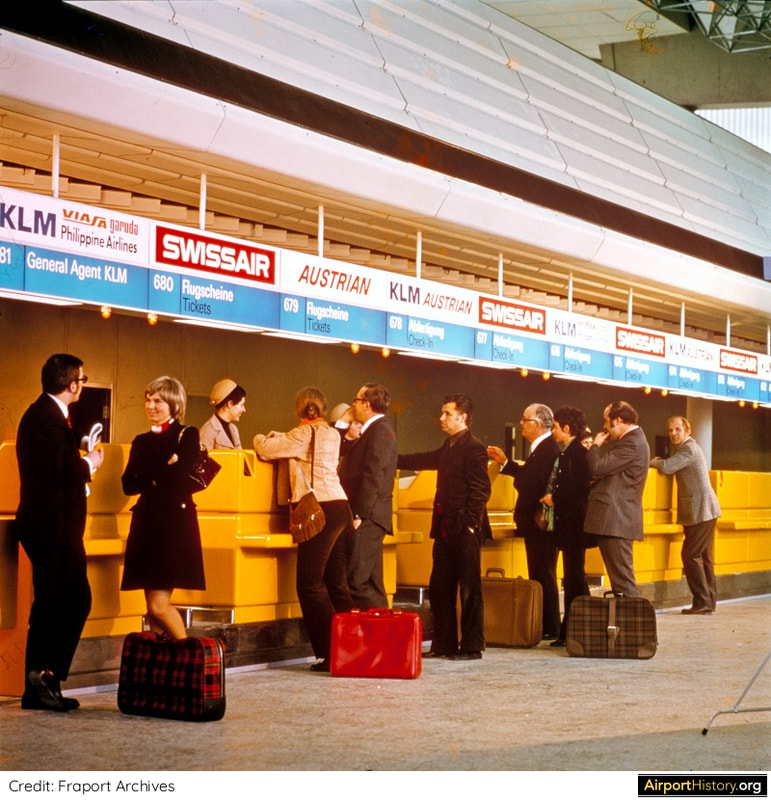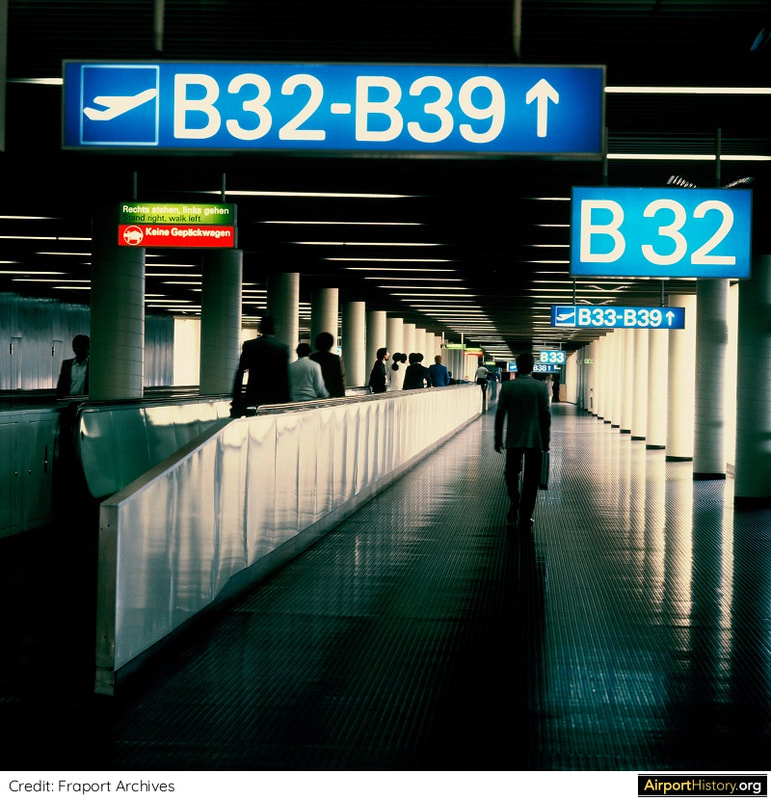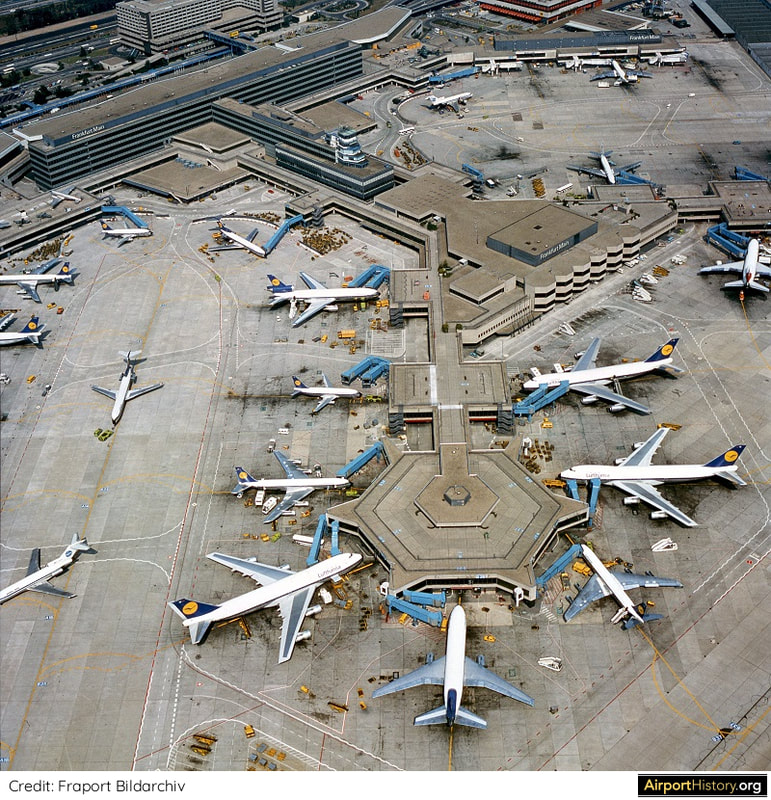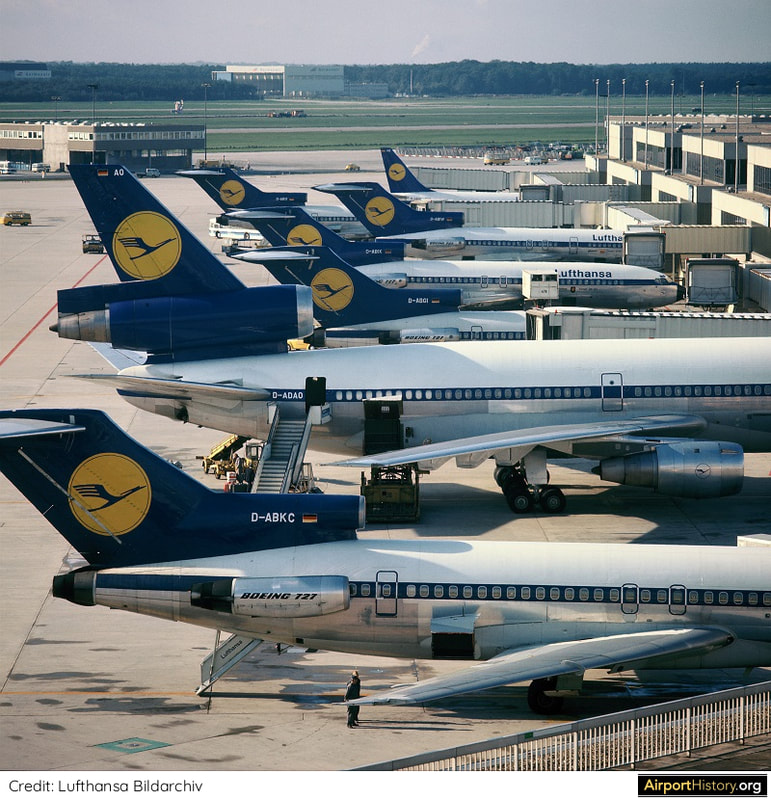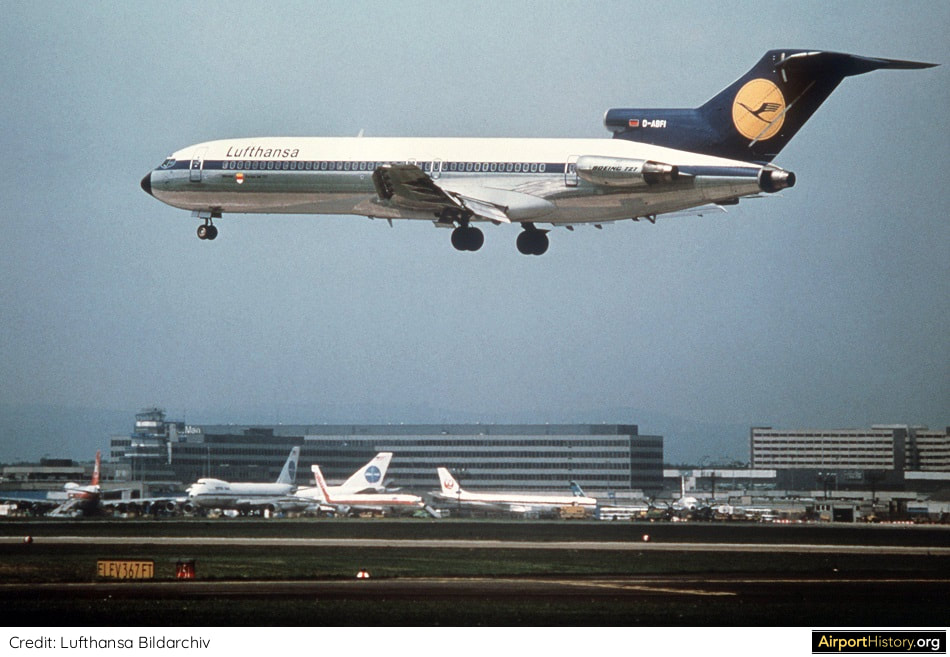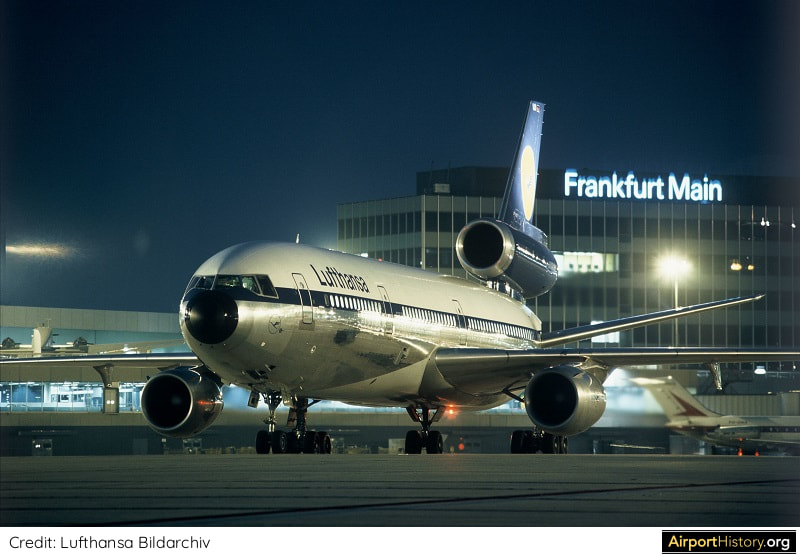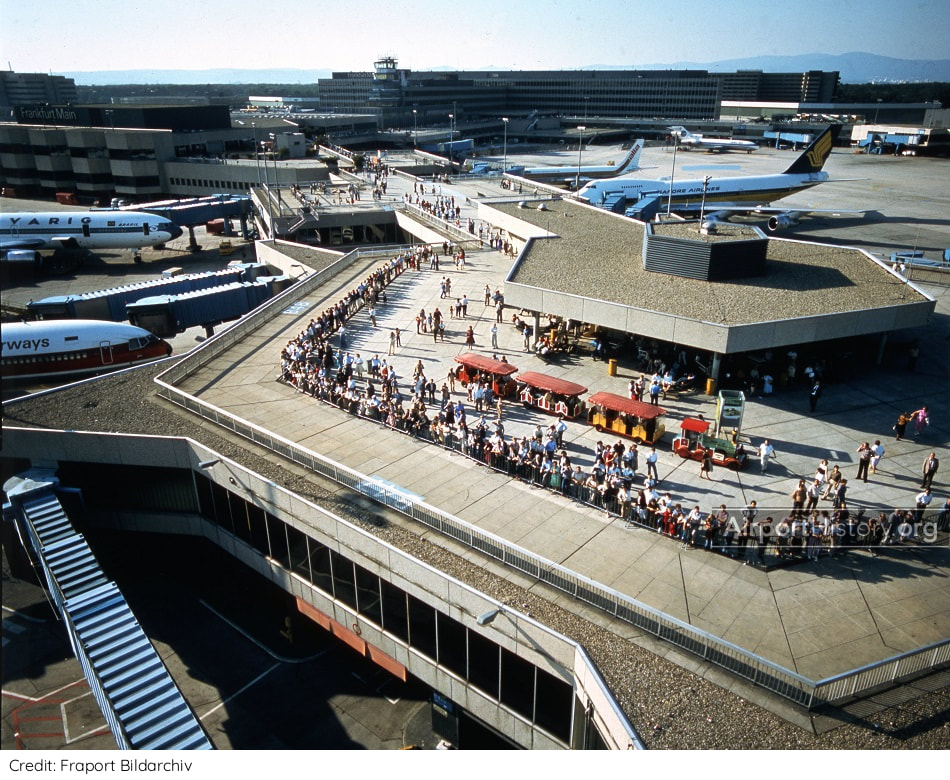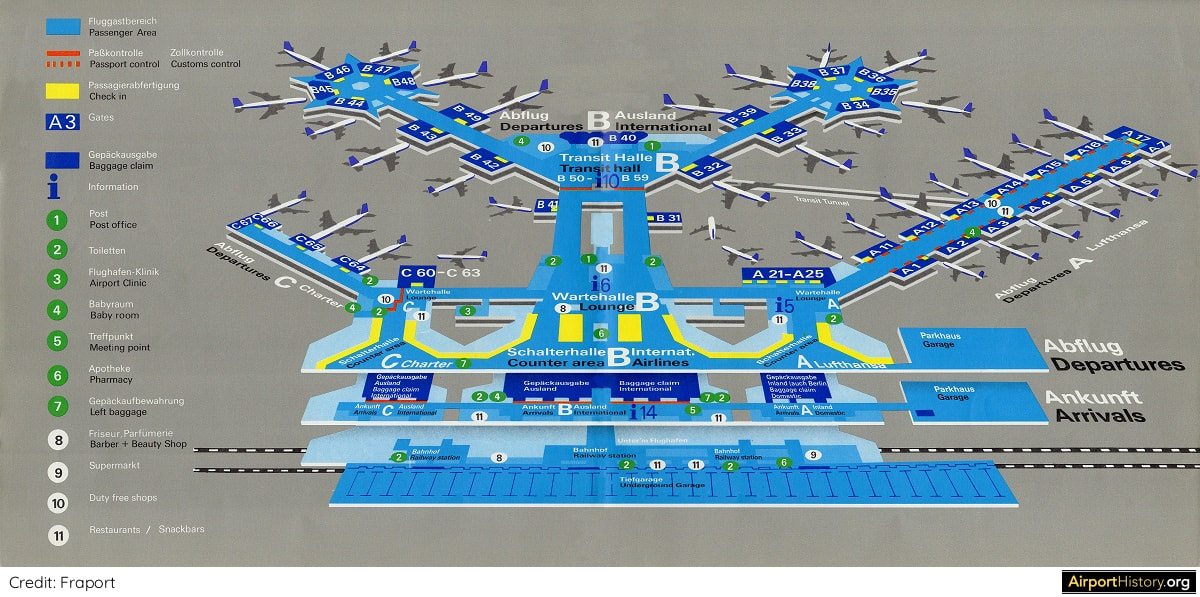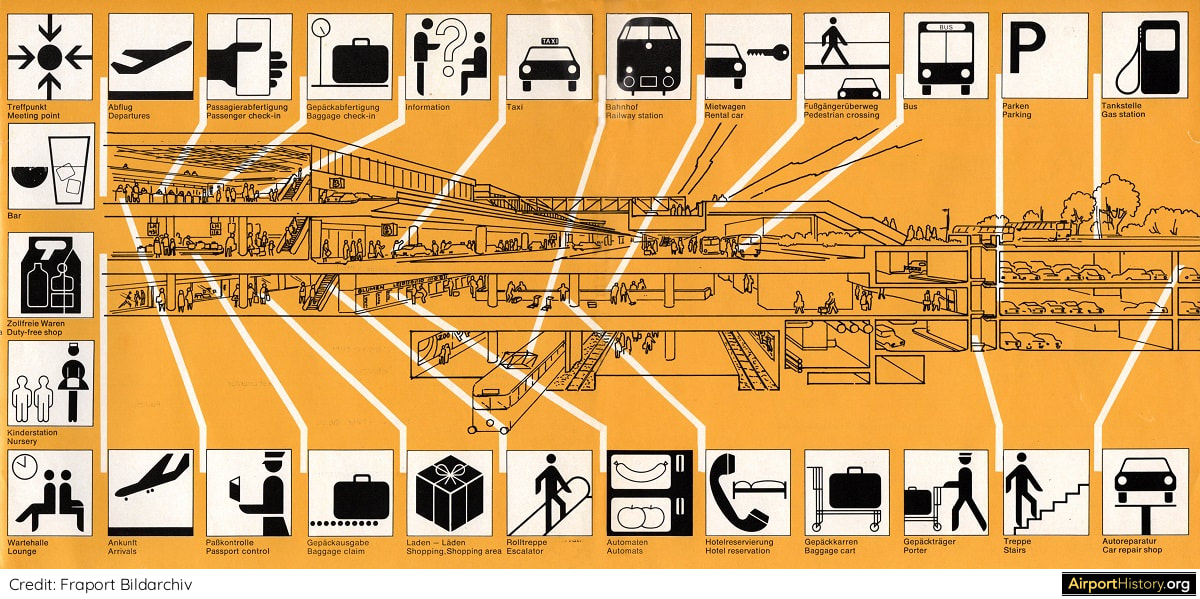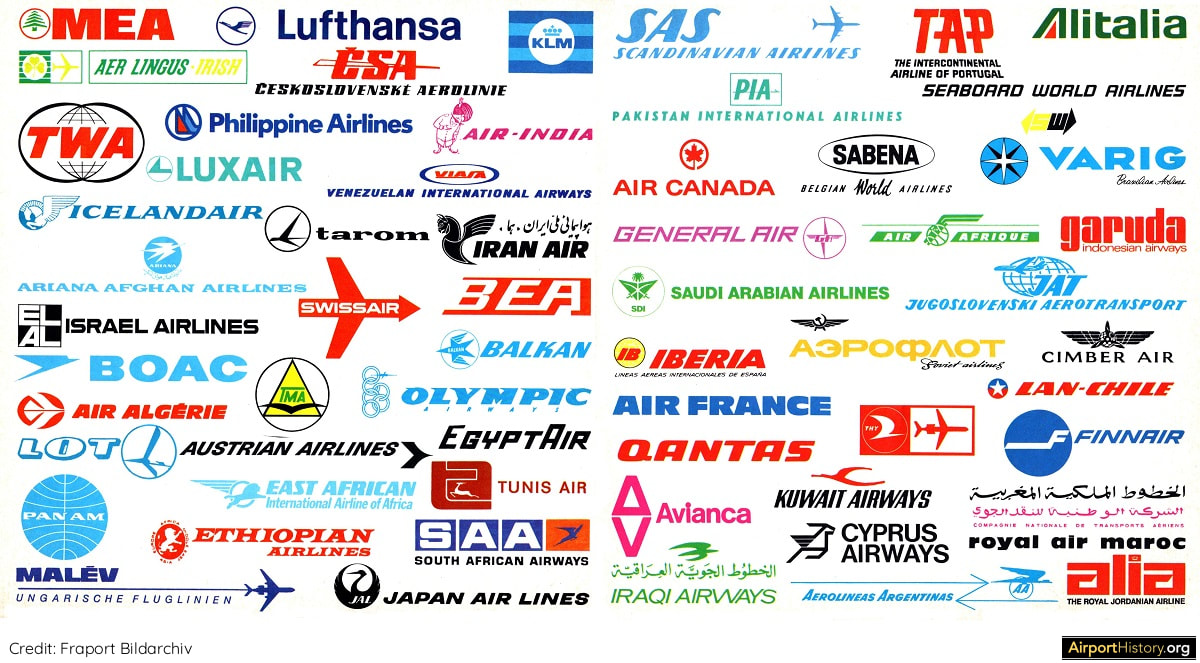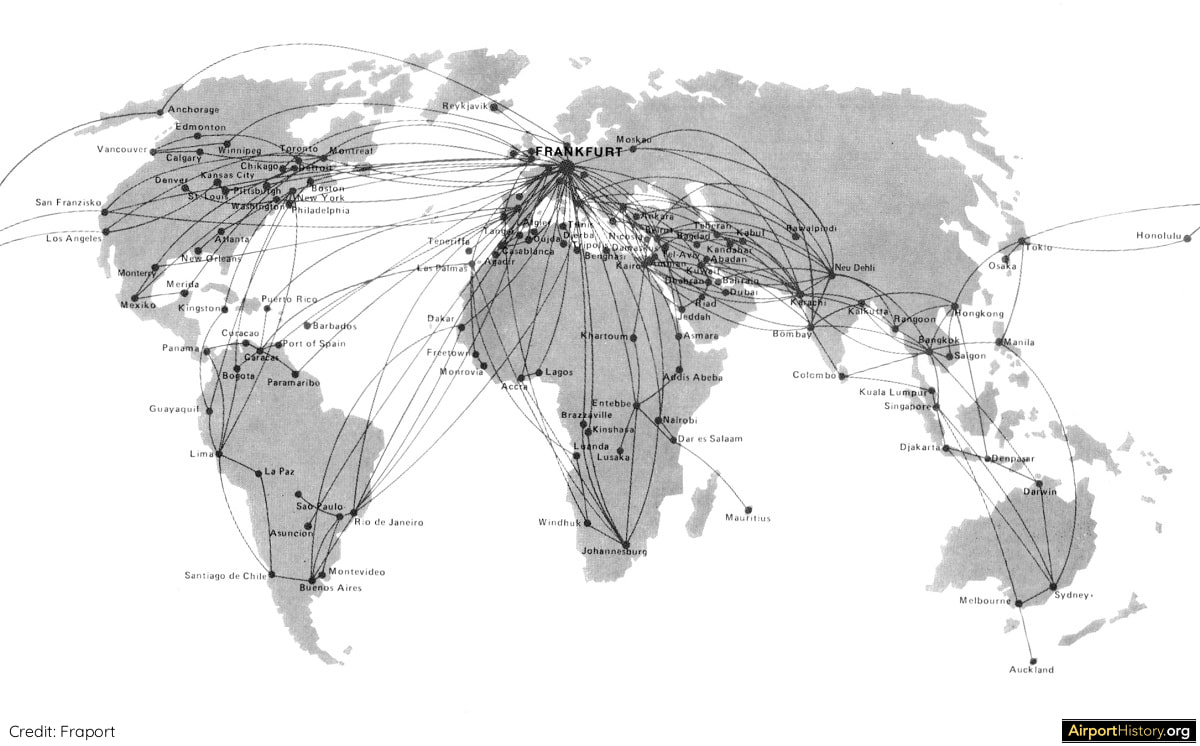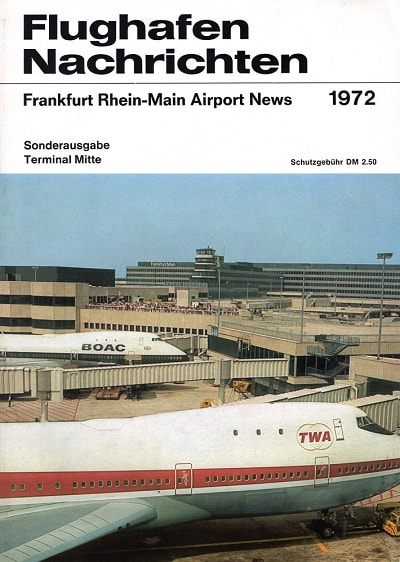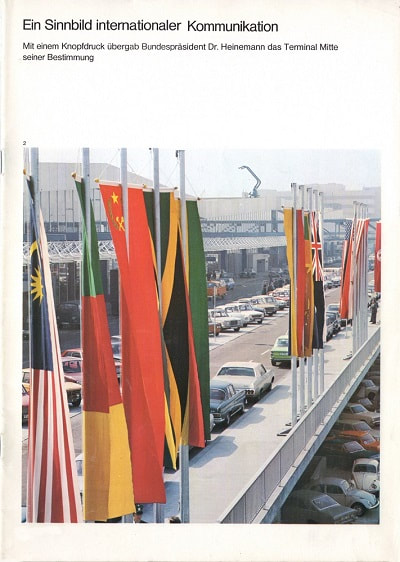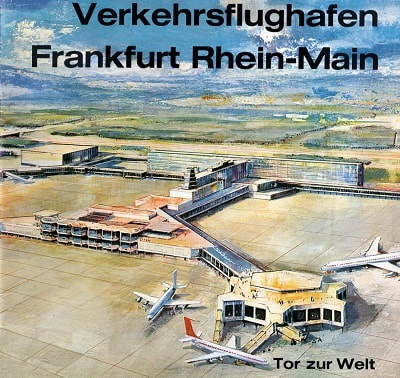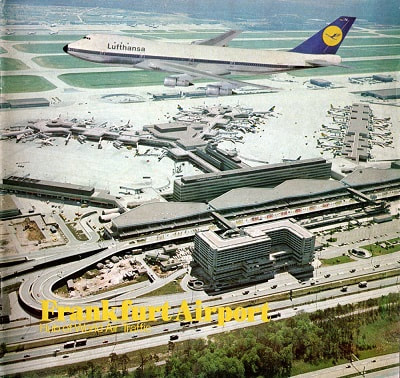Published: March 26, 2022
On March 14, 1972, Frankfurt's Terminal 1, then called "Terminal Mitte," was inaugurated. In this photo feature we celebrate T1's 50th by looking back at its design, construction and early years. Enjoy our tribute to Terminal 1, one of the great airport terminals of the early Jet Age!
I want to give a special thanks to Markus Grossbach and Annette Schmidt, who run the Fraport archives with great competence and passion. They have been enthusiastic supporters of AirportHistory.org since its inception in 2012. I feel proud to call them my friends. A special thanks also to Carola Kapitza--now retired--who managed the Lufthansa archives.
Frankfurt Airport before Terminal 1
A rare color aerial of Frankfurt Airport taken ca. 1965, looking southwest. The airport's two parallel runways had been lengthened when the first jets entered service and were among the longest in Europe.
In 1961, Frankfurt handled 2.57 million passengers, ranking it 15th busiest in the world and third busiest in Europe after London Heathrow and Paris Orly. Frankfurt is a small city but it is located right in the center of Germany making it an ideal location for a hub.
In 1961, Frankfurt handled 2.57 million passengers, ranking it 15th busiest in the world and third busiest in Europe after London Heathrow and Paris Orly. Frankfurt is a small city but it is located right in the center of Germany making it an ideal location for a hub.
A TWA Boeing 707 is parked on the apron in front of the terminal building in the early 1960s. TWA started serving Frankfurt with the aircraft type in the summer of 1959. Other airlines which started using jets to Frankfurt that year were BOAC, Air France, Pan Am and Aerolineas Argentinas.
By the winter of 1960, there were 266 weekly takeoffs and landings with jet aircraft and 16 out of 36 airline companies serving Frankfurt were using jets.
By the winter of 1960, there were 266 weekly takeoffs and landings with jet aircraft and 16 out of 36 airline companies serving Frankfurt were using jets.
A late 1960s interior image of the passenger terminal. As was the case elsewhere in the developed world, traffic was booming and facilities were unable to cope. In 1965, a new domestic hall was built in a record time of six months, raising the capacity from 3.5 to 9 million annual passengers.
VIDEO: VARIOUS VIEWS OF FRANKFURT AIRPORT IN 1967 (IN GERMAN)
A busy ramp scene ca. 1966. Note the passenger boarding bridge to the upper left, then still very much a novelty in Europe. It was the airport's only one at the time and was supplied by Dutch firm Aviobridge.
VIDEO: RAMP ACTION AT FRANKFURT AIRPORT IN 1967 (IN GERMAN)
Planning and construction of "Terminal Mitte"
A 1965 artist's impression of the proposed Terminal Mitte. Initially, planners envisaged a building with piers that could accommodate 34 aircraft and process 10-12 million passengers annually. At the time, the terminal was estimated to cost DEM 300 million.
The building, initially scheduled to be completed in 1969, was designed by German architects Alois Giefer and Hermann Mäckler, who also designed the expansion of the existing passenger terminal.
The building, initially scheduled to be completed in 1969, was designed by German architects Alois Giefer and Hermann Mäckler, who also designed the expansion of the existing passenger terminal.
Construction on Terminal Mitte started on June 16, 1965. This image shows the state of affairs in 1967. In the foreground an Air India Boeing 707 takes off from runway 07L/25R (now 07C/25C).
With traffic booming and with new developments such as the 747 on the horizon, in mid-1967, it was decided to radically alter the plans. The construction volume was raised from 1.3 million to 2.2 million cubic meters. The number of direct contact stands was raised to 36, half of which would be suitable for the Boeing 747.
The annual capacity was more than doubled to 30 million passengers annually. At the time, it was believed that this would be sufficient until the year 2000.
The annual capacity was more than doubled to 30 million passengers annually. At the time, it was believed that this would be sufficient until the year 2000.
VIDEO: PLANNING AND CONSTRUCTION OF TERMINAL MITTE AND OTHER FACILITIES (IN GERMAN)
A 1969 aerial view of the construction of Terminal Mitte. At the time, it was the largest construction site in Western Europe. The cost of Terminal Mitte and associated works would rise to a billion Deutschmarks.
Enjoying this article?
Sign up to our e-mail newsletter to know when new content goes online!
Terminal Mitte opens for business
On January 28, 1970 at 8:36 AM, the wide-body era started at Frankfurt with the arrival of a Pan American 747-100 with the name "Clipper Red Jacket." The visit was unexpected, as the jet was actually on its way from New York's Kennedy Airport to London Heathrow but had to divert due to fog at Heathrow. The airline commenced scheduled service with the 747 from JFK to Frankfurt in April of the same year.
A 1970 overview of Frankfurt looking west southwest. The construction work on Terminal Mitte and the landside road system can be clearly seen. Two of Germany's most important expressways, the A3 and A5, intersect at the airport.
To the left of the parallel runways is the Rhein-Main Air Base, which was the primary airlift and passenger hub for the United States forces in Europe. It closed on December 30, 2005, more than 60 years after it was established. Currently, a new Terminal 3 is under construction at the site.
To the left of the parallel runways is the Rhein-Main Air Base, which was the primary airlift and passenger hub for the United States forces in Europe. It closed on December 30, 2005, more than 60 years after it was established. Currently, a new Terminal 3 is under construction at the site.
Lufthansa's first Boeing 747-130, with the registration "D-ABYA" is parked at gate B36 sometime during the summer of 1970. "Flugsteig B" had already been put in operation, while Terminal Mitte was still under construction. Passengers were bussed between Flugsteig B and the old terminal.
D-ABYA was the 12th 747 produced by Boeing. The "Yankee Alpha," as it was called within the company, was handed over to Lufthansa on March 9, 1970 and was deployed on the Frankfurt-New York route for the first time on April 26, 1970. Lufthansa was the first European airline to provide its passenger the opportunity to fly by a jumbo jet, being the second international airline following Pan American World Airways.
D-ABYA was the 12th 747 produced by Boeing. The "Yankee Alpha," as it was called within the company, was handed over to Lufthansa on March 9, 1970 and was deployed on the Frankfurt-New York route for the first time on April 26, 1970. Lufthansa was the first European airline to provide its passenger the opportunity to fly by a jumbo jet, being the second international airline following Pan American World Airways.
An aerial image of Terminal Mitte, taken in the summer of 1974. The concourse at the top of the image--Flugsteig A--and the left part of Flugsteig B were used by Lufthansa. The two were connected by means of an underground tunnel, which, together with the automated baggage handling system, helped to ensure connecting times of only 45 minutes for Lufthansa passengers changing flights.
The other section of Flugsteig B--closest to the camera--was used by international scheduled airlines. The short Flugsteig C, in the right of the image, was for the use of charter traffic, which in those days represented a significant percentage of traffic in Europe.
In the far right of the image, directly opposite the terminal, is the Sheraton Hotel under construction. It opened in February 1975 and at the time was Europe's largest airport hotel
The other section of Flugsteig B--closest to the camera--was used by international scheduled airlines. The short Flugsteig C, in the right of the image, was for the use of charter traffic, which in those days represented a significant percentage of traffic in Europe.
In the far right of the image, directly opposite the terminal, is the Sheraton Hotel under construction. It opened in February 1975 and at the time was Europe's largest airport hotel
VIDEO: 1978 OVERFLIGHT OF FLUGSTEIG B (IN GERMAN)
Get rare FRA documents from the 1960s and 1970s!
Click the gallery below to get carefully restored, high-quality downloads for personal use.
Click the gallery below to get carefully restored, high-quality downloads for personal use.
GALLERY: TERMINAL MITTE INTERIOR IMAGES (CLICK TO ENLARGE)
VIDEO: A 1978 TOUR OF TERMINAL MITTE (IN GERMAN)
GALLERY: FRANKFURT - THE HOME BASE OF LUFTHANSA (CLICK TO ENLARGE)
A 1970s view of Frankfurt's observation deck, which occupied the entire roof of Flugsteig B, and which was one of the best in the world. To the dismay of many aviation enthusiasts, it was closed in 2006 to build a new floor on the existing structure.
GALLERY: MAPS, AIRLINES, ROUTES (CLICK TO ENLARGE)
We hope you enjoyed our little tribute to Frankfurt's Terminal 1! Also check out our blog articles on Frankfurt here and here. Or have a look at our library items here.
Did you travel through Frankfurt way back when? Share your experience in the comments below!
Did you travel through Frankfurt way back when? Share your experience in the comments below!
For more airport articles: click here
Get rare FRA documents from the 1960s and 1970s!
Click the gallery below to get carefully restored, high-quality downloads for personal use.
Click the gallery below to get carefully restored, high-quality downloads for personal use.

